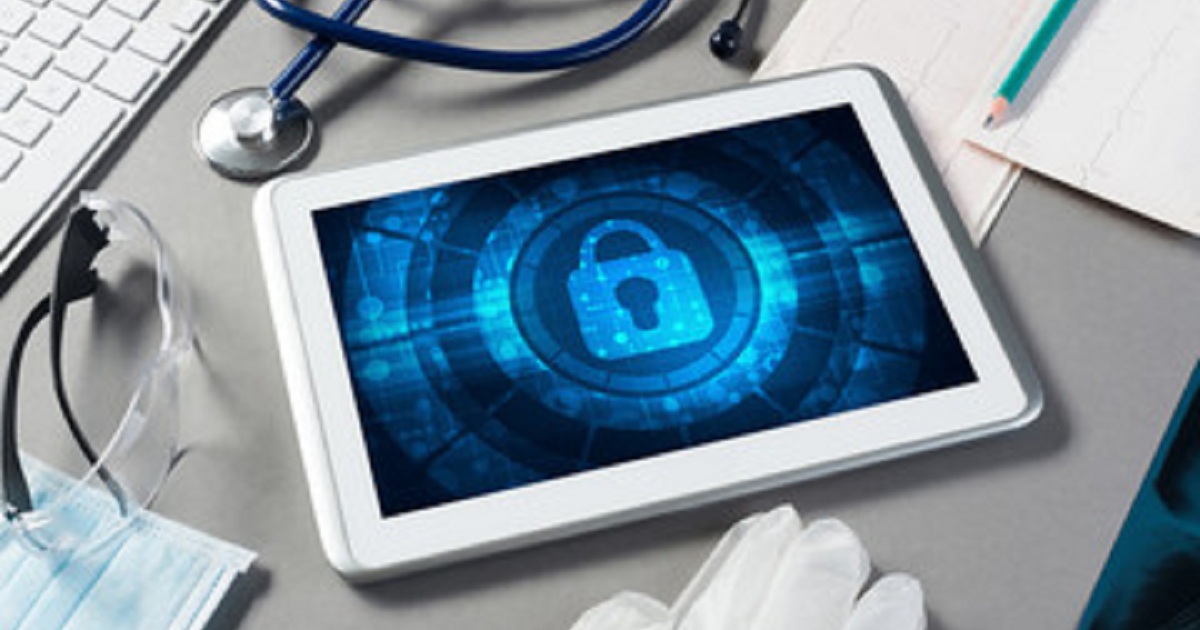
Health Technology, Digital Healthcare
Article | July 14, 2023
With data security becoming a pressing issue in the healthcare industry, having a robust security operations center is the cybersecurity solution. Over the past few years, US Department of Health and Human Services (HHS) data breaches have been at an all-time high. Moreover, in the United States alone, cyber-attacks on the healthcare systems result in a loss of US$6.2 billion every year. Thus, making the use of SOC in healthcare very crucial.
Read More

Health Technology, Digital Healthcare
Article | August 16, 2023
Creative thinking explores the wonder world of creation. Creative thinking edit challenges and insert solutions. Thinking is not narrow minded; it is a brood minded side effect. Are you standing still , holding the sign detour? Detour signal and message “ you cannot go pass here.” This message is like concrete to narrow minded thinking.Brood minded thinking says it is another way, I will find it , dismissing blind spots.. Napeleon Hill stressed the importance of ones’ thoughts in his Book Think and Grown Rich. Yes, the drum beat rymthe of the mind is thinking and manifesting an outcome. Napeleon Hill message is to sweep yourself to success, lean on the Bibical scripture” As you think so shall you be” As you think so shall you be amplfies the constant and significant need for growth and expanding. An interesting simple guarantee; a burning desire and an idea survives on the basis of thought, of will, of consistency and of determination. Contary to desire is force of giving up. The giving up force is similar to a ballon that’s blown up , being popped or untied , spilling and releasing out the air that blew it up. While the barriers of thought can spout limits; heels of success potential are unlimited.
Thinking holds and embrace hands with the imagination, knowledge, visions,dreams, goals, wisdom,implementing a plan and an understanding. Consideration must ahere to a pattern of habit conditioning to implement and discover the enlightment engraved in devolping and being mindful of ones’thoughts.
Goals- action based ( preferably written instuctions for best results) providing guidance for a desired outcome. The necleus for goals achievement is : confidence, commitment, clarity, creavity and consistency. Determination, desire and discipline are unstoppable buddies who see each other everyday.This is goal code.
Imagination- imagination confess it is a continious activity seeking expression and is a storage center with creative wonders and unlimited possibilities.
Dream- Dreams are a reflection of a desire begging to be recognize and fillful its purpose.
Knowledge- Learning acquired through process of exposure,training ,education , reading, research or experiment
Vision: reflection or an image created by words. Vision boards are useful and should be accompanied by words to assist in creating a vision. For instance, hearding the words pinkchair will flash an image of a pink chair to your thoughts of a pink chair.
Plan- Plan is a diligent fan of goals. Plan provides instructional and clarity on a proposal; action to be taken and potential of its being productive, profitable and feasible. A plan is mission related, written and allow simple,easy and effective and steps for implementing
What are the influencers and principles that are weaved into creavtive thinking?
Thinking habits- how you see,explain and intrepret
Environment- exposure ,travel, and surrounding
Adversity- solution and problem solving based
Altitude- level of understanding
Knowledge- Learning structure
Experience- practical knowledge gained
Personal Development- promotion of ones’ learning and a concentrated effort to be informed
Do not clog the drain. Thoughts are useful things. Thoughts can nudge you to be creative. Remember information is abundant and thoughts have power to create. “You can be what you want to be, do what you want to do, have what you want to have” Rev. Ike. This idea is associate with creative thinking. Creative thinking is an affirmation for success. It is also stated “ change your thoughts, change your life” Wayne Dyer Think, speak and affirm is a side effect lingering in creative thinking.Creative thinking is the drum beat of the mind. As it is said, Give the drummer some!”So I will so I can” is a mind with thoughts and thinking that erase impossibe.
Think About This- Be creative
Wear shoes that fit
Do not hurt your feet
With sores of regret
Wounds of doubt
And blisters of neglect
Read More

Healthtech Security
Article | August 31, 2023
The healthcare industry is witnessing an unparalleled phase of expansion and vitality. It is a phase of radical revolution due to the wake of digital transformation. Digital transformation has opened up enormous unique opportunities that were unimaginable until a few years back.
These digital trends are bringing companies and individuals together. Data is the starting point of the digital revolution. These data are then transformed into relationships. Today, including healthcare companies, the success of every company is at stake. In other words, it is how you communicate with customers that matters.
This blog is all about healthcare digital communication, especially healthcare video marketing.
We’ll start by looking at data that demonstrates the power and effectiveness of the video marketing medium. There is nothing equal to the power and efficacy of video marketing in our world today. Then, we’ll look at the video marketing best strategies, healthcare video marketing best practices, and successful examples for healthcare video marketing.
There’s Nothing More Effective than Video Marketing
Here are some numbers that alone demonstrate why video is the most effective marketing medium in the digital age:
More than 5 billion videos are viewed on Youtube every day;
78% of online users watch at least one video every week. And 55% watch one every day;
According to estimates by Cisco, by 2022, 82% of all internet traffic will be generated by video. This percentage was already 72.3% in 2017;
When it comes to video, 55% of people pay more attention than any other type of content;
when viewing a video, the average user retains 95% of the message it contains; this percentage goes down to 10% when we talk about the text;
about 100 million hours of video watched every day on Facebook;
82% of registered Twitter users consume video content constantly;
on Instagram, posts containing video record 38% higher engagement on average than posts containing images;
54% of consumers say they want to see more videos from the brands they follow and support.
Such statistics are compelling for brands, and brands are taking notice. As a result, brands are moving to implement videos as much as possible in their marketing strategies, with excellent results. Two statistics below offer additional proof:
87% of marketing professionals use video in their strategy.
88% of marketers are satisfied with the ROI generated by video marketing campaigns.
This collection of data proves one thing: video is the most effective tool for healthcare digital marketing. And this also applies to the Healthcare sector. It’s even more accurate for this sector, which is intimately involved with consumers as part of their daily lives. Thus, healthcare video marketing is much effective and should be included in your healthcare marketing plan.
Strategies and Best Practices of Healthcare Video Marketing
So, let’s take a closer look at how we can build a video marketing strategy in the Healthcare sector, the fundamental points that must be included, the best practices, and some examples of success.
Start from education
It is often said that we live in the information age. Today, as never before, we have access to all the information we could need in just a few seconds, maybe with just a few taps on our smartphone during a coffee break. Health information is undoubtedly among the most sought-after online. In Italy alone, web searches made on this topic are 4 billion per year, a constantly growing trend.
The downside of all of this is the difficulty of finding your way around this mass of information, which is sometimes complex, misleading, or even untrue. That is why the first task of a company in the Healthcare sector is education. Education is not just a responsibility; and it’s also an opportunity.
In this sense, healthcare videos marketing prove to be the best ally. Healthcare video marketing is a way to provide the consumer with an effortless way to have access to transparent, precise, and authoritative information from your brand. That can be the first step toward establishing a relationship of trust with your brand.
Be clear, but also calm
In this case, let’s start immediately with an exciting and practical example. Targeted toward their younger patients, Miami Children’s Hospital created a healthcare video marketing campaign that explains what happens before, during, and after heart surgery. Understandably, this is a sensitive topic. With this effort of healthcare video marketing, the Miami Children’s Hospital manages to achieve the complex objective of providing clear and authoritative information while at the same time reassuring the viewer.
How?
They make the healthcare video marketing campaign compelling, authoritative, and reassuring by showing the faces of its staff members, demonstrating their professionalism, the environment, the healthcare technologies used, and everything related to the surgery. In this way, the high level of preparation and humanity of the people involved stand out to the viewer.
Learn to be engaging
As we saw above, you have to know how to correctly inform and educate your audience using influential healthcare video marketing trends, all with a calm demeanor. However, it’s also true that success also depends on your ability to excite and involve the viewer for healthcare video marketing in the sector. In short, the keyword is ‘storytelling.
An excellent example is the healthcare video marketing campaign carried out by the dental health department of Bupa UK and addressed to children (but applicable and reachable to adults as well). Through a great use of animations and storytelling, the brand uses the well-known story of the tooth fairy and associates it with childhood memories. This healthcare video marketing campaign has proven to be an excellent vehicle for establishing a truly intimate relationship with the viewer (and, not surprisingly, the video has exceeded 1.3 million views on YouTube).
Another effective way to be direct and engaging is to use influencers in your healthcare video marketing campaigns. An exciting example is the Australian pole vaulter, Amanda Bisk, diagnosed with chronic fatigue syndrome. On her Instagram channel, Bisk talks about her path to fight the disease through fitness, and she has quickly become one of the most famous figures in Healthcare on the platform.
It’s important to note that today, more and more brands target top influencers and micro-influencers. Micro-influencers have a much smaller yet targeted and loyal following of fans. Therefore, their healthcare video marketing messages are perceived by the public as more authentic and personal.
Personalization
94% of marketers believe that personalization is crucial for the future of the business in which it moves. But what do we mean when we talk about personalization?
First of all, it’s not something new: knowing your audience has always been the best way to make a profit, calibrate your communication and your “tone of voice,” and increase engagement and loyalty. But what is the turning point of personalization today?
It is a digital turning point. Today, we all leave traces online at every moment: geolocation, Google searches, preferences on social networks, apps (which in Healthcare are increasingly widespread), and so on. We are talking about a vast amount of data that benefits both companies and consumers from a win-win perspective.
Therefore, it’s a matter of utilizing efficient systems to collect this data, dynamic systems designed with an omnichannel approach in mind. From the collection, the next step is to analyze and interpret this information. Then, you will want to divide your audience into many micro-targets with homogeneous and consistent characteristics to target with tailored communications and offers.
In conclusion, these facts are all the more true in a sector like healthcare that impacts people’s daily lives. The best healthcare video marketing strategy for brands can only be to get closer and closer to customers. That is precisely where specialized companies like us, Media7, come into play. Through compelling B2B healthcare video marketing efforts, we create opportunities for interaction and the possibility to insert custom calls to action.
FREQUENTLY ASKED QUESTIONS
What is a video marketing strategy?
Video marketing strategy is creating, curating, and utilizing videos for marketing products and services of companies to the targeted audience. Marketing teams design the strategy. The idea behind the strategy is to keep the audience engaged with the brand.
Are videos effective for health tech marketing?
Videos are much effective for health tech marketing as people prefer to watch things than reading. Also, people are likely to trust what they see than reading. Videos are the highly impactful medium of marketing for any domain of business, including healthcare.
How to start with healthcare video marketing?
The first step to healthcare video marketing is to define your video marketing strategy. Fix and analyze the target audience to understand the online behavior trends to get an idea about their video engagements and clicks on various social media channels.
Read More

Article | December 15, 2020
As medical science has improved rapidly, life expectancy around the world also has risen. Still, as longevity increases, healthcare systems are facing a growing demand for advanced services, increased costs, and a struggling workforce to meet various requirements of patients. Demand is driven by many unstoppable forces: a shift in lifestyle choices, shifting patient expectations, population aging, and the never-ending cycle of innovation are a few among others.
Challenges Faced by the Healthcare Industry
According to Mckinsey, one in four people in North America and Europe will be over the age of 65 by 2050. This shows that, soon, the healthcare industry will have to deal with a larger number of patients with more complex requirements. Catering to these patients is expensive and requires health systems for providing long-term focused and proactive care. To remain sustainable, healthcare systems need major transformational and structural changes.
The industry also needs a larger workforce because according to the World Health Organization (WHO), globally there is a shortfall of approximately 9.9 million nurses, physicians, and midwives. Apart from attracting, training, and retaining these healthcare professionals, you also have to ensure that their time and effort add value to patient care. Utilizing the solutions powered by modern technologies, such as Artificial Intelligence (AI) in the healthcare industry, will add perfection and more value to human efforts.
AI in the healthcare industry has the potential required to transform and revolutionize healthcare by addressing the challenges in the industry mentioned earlier. AI can better the outcomes, improve efficiency, and augment productivity in healthcare delivery. This article takes an in-depth look at the impact of AI in healthcare.
Impact of AI in the Healthcare Industry
In the coming years, AI in the healthcare industry will improve the day-to-day life of healthcare practitioners, augment the patient experience, improve care delivery, and can even facilitate life-saving treatments and revolutionize the industry. Additionally, AI will improve population-health management, operations, and strengthen innovations.
According to Statista, the global AI healthcare market will increase to more than US$28 billion by 2025. Here is a detailed look into the areas where and how AI in the healthcare industry will be impactful.
Chronic Care Management
Chronic diseases, such as cancer, diabetes, kidney diseases, are the leading cause of disability and death in the US and the main drivers of the country’s annual health cost. Effectively managing various chronic diseases is an overarching and long-term process. But with the help of the right tool, healthcare providers can meet the needs of these patients without delay.
Artificial intelligence tools in the healthcare industry can help healthcare providers overcome the complexities of chronic disease management and make it more effective and provide quality treatment. AI in the healthcare industry is increasingly being leveraged by organizations to improve chronic disease management, enhance patient health, and drive down costs, which will also eventually result in data-driven and personalized care. AI in the healthcare industry is expected to move the industry toward proactive care delivery from a reactive one and lead the industry to provide more individualized treatments. This is just one of the ways AI in the medical industry is going to revolutionize chronic care management in hospitals.
Care Delivery
Artificial intelligence in the healthcare industry is changing the way care is delivered; it is expected to make healthcare more efficient, accurate, and accessible. Reducing costs and improving health outcomes are the values health systems and hospitals are trying to deliver to patients every day. Hospitals are increasingly incorporating technologies, which are powered by the use of AI in healthcare to meet the challenge.
According to the American Hospital Association (AHA), AI in the healthcare industry has unlimited potential to solve most of the vexing challenges in the industry. They identify AI use cases in the healthcare industry in four broad areas, which are administrative, operational, financial, and clinical areas.
Administrative Use Cases for AI in the Healthcare Industry
• Admission procedures
• Appointment scheduling
• Customer service responses
• Discharge instructions
• Hiring and orientation protocols
• Licensure verification
• Patient check-in procedure
• Prior authorizations
• Quality measure reporting
Operational Use Cases of AI in the Healthcare Industry
• Inventory management
• Materials management
• Supply chain management
• Facilities management
Financial Use Cases for AI in the Healthcare Industry
• Billing and collections
• Claims management
• Insurance eligibility verification
• Revenue cycle management
Clinical Use Cases of AI in the Healthcare Industry
• Predictive technologies
• Interventional technologies
By incorporating and utilizing these scopes with AI in the healthcare industry, the industry can be transformed into a next-gen level in no time. It also allows healthcare practitioners to focus more on patients, which would eventually help in raising staff morale and improving retention.
Clinical Decision Support
Recent advancements in AI in the health industry are capable of enhancing the currently used clinical decision support (CDS) tools to have value-based imaging and to improve patient safety. According to the National Institute of Health (NIH), the synergy between CDS systems and AI in the healthcare industry will be able to:
• Reduce friction in radiology workflows
• Identify relevant imaging features easily
• Generate structured data to develop machine learning algorithms
• Enable an evolution toward decision support for a holistic patient perspective
• Suggest imaging examinations in complex clinical scenarios
• Assist in identifying appropriate imaging opportunities
• Suggest appropriate individualized screening
• Aid health practitioners to ensure continuity of care
AI in the healthcare industry is competent in making CDS a next-gen one, enhancing the experiences of radiologists and providers, and improving patient care.
Diagnostics
Slowly but surely, AI is improving almost every aspect of human life with innovations and advancements. The latest is that AI in the healthcare industry is impending a revolution in medical diagnostics by providing accurate risk assessments, accelerating disease detection, and boosting hospital productivity. By automatically prioritizing urgent cases and accelerating reading time, image recognition AI enhances the workflow of radiologists. It even helps in the prevention of diseases by the early detection of diseases.
In medical images such as x-rays, MRIs, and CT scans, AI-driven software can efficiently be used to accurately spot signs of many diseases, especially in detecting many chronic diseases such as cancer. According to the NIH, AI will be widely applied in the healthcare industry especially for various tasks such as patient engagement and adherence, diagnosis, and treatment recommendations. So, there is no doubt that AI in healthcare will revolutionize the diagnostic process in the approaching years by detecting diseases, classifying diseases, and improving the decision-making process. The application of AI in the healthcare industry will make people live longer.
Triage and Diagnosis
AI can be effectively used to automatically triage cases. AI algorithms will analyze the cases and forward cases to pathologists after determining the priority based on the probability of cases according to the criteria set by labs. This makes the workflow of pathologists easier and efficient. Through the process the algorithm will be able to:
• Verify the digital images attached to the case belong to that case
• Validate the tests ordered and match the specimen type
• Identify cases marked as stat
• Determine the cases, which can be positive or are most likely to be negative
Moreover, AI technologies in the healthcare industry also can be effectively used to provide more accurate and faster diagnoses. This speeds up the entire process of triage and diagnosis and is expected to revolutionize the healthcare industry soon.
The Future Outlook for AI in the Healthcare Industry
Over the next few years, AI in the healthcare industry has the best opportunities in hybrid models to support clinicians in diagnosis, identifying risk factors, and in treatment planning. This scope will result in faster adoption of AI technology in healthcare, which will show measurable improvements in operational efficiency and patient outcomes.
With a plethora of issues to overcome, which are driven by documented factors such as growing rates of chronic diseases and the aging population, it is obvious that the healthcare industry needs new innovative solutions. AI-powered solutions in the healthcare industry will achieve a clear impact on the global healthcare industry in a short time.
Frequently Asked Questions
Which is the best application of AI in the healthcare sector?
Cognitive surgical robotics is the best application of AI in the healthcare sector as it helps practitioners collect data from real surgical processes, which would help in improving existing surgical approaches.
Why is artificial intelligence important in healthcare?
Artificial intelligence in healthcare is vital as it can help make decisions, analyze and manage data, and have conversations. So, AI will drastically change the everyday practices and roles of clinicians.
When was AI-first used in healthcare?
The term, Artificial intelligence (AI) was first described in 1950, but the limitations of the term prevented its acceptance. In the 2000s, these limitations were overcome and people started to accept the term.
Read More